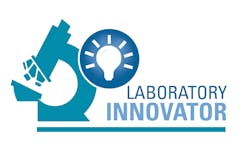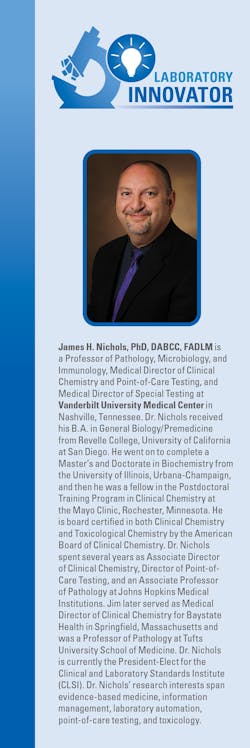Can you share how you became interested in laboratory medicine and what led you to focus on hemolysis in particular?
I first got interested in laboratory medicine during graduate school while studying vaccine development. That curiosity really deepened during my postdoc in Clinical Chemistry at the Mayo Clinic. Over the past 33 years, I’ve worked at places like Johns Hopkins, Bay State Medical Center, and now at Vanderbilt University, where I serve as a Professor of Pathology, Microbiology, and Immunology and I am Medical Director of Clinical Chemistry and Point-of-Care Testing.
My background in chemistry and lab automation naturally led me to focus on hemolysis because it’s such a widespread issue that directly affects the accuracy of lab testing, and ultimately, patient care in some of the most high-risk areas of the hospital.
How does hemolysis affect test results, and what are the most clinically significant consequences of inaccurate results due to hemolyzed specimens?
Hemolysis happens when red blood cells rupture, releasing their contents into the sample. This can really interfere with lab tests, leading to falsely elevated potassium levels, possibly leading to serious misdiagnosis or inappropriate treatment. Even when potassium looks normal, hemolysis might still be present and skew results. It’s a subtle but critical problem we have to stay ahead of.
What role do phlebotomy practices and staff training play in reducing hemolysis, and are there tools or metrics that help track this effectively?
Phlebotomy practices are huge when it comes to preventing hemolysis. Training staff properly, especially those working with neonates or patients with difficult venous access, is essential.
At our lab, we look at hemolysis rates by unit and patient population so we can provide feedback and improve collection techniques. It’s all about identifying where the problems are happening and giving teams the right support to fix them.
Can you tell us about a specific technology or approach that’s made a real difference in detecting hemolysis?
Yes, there’s a new blood gas system that’s really promising. Werfen’s GEM Premier 7000 with iQM3 uses acoustic separation of whole blood in real time, which means we can detect hemolysis right away. That’s a big advancement, especially for point-of-care testing, where hemolysis often goes unnoticed. Having that real-time detection and flagging makes a huge difference in both accuracy and response.
How does undetected hemolysis impact patient care? How does it impact the lab?
Undetected hemolysis is risky. It can make a patient look like they’re fine when they’re not, or make them look like something’s wrong when everything is actually okay. In a clinical setting, that can lead to delayed or incorrect treatment. For the lab, it throws off quality metrics and creates a ripple effect across departments. We see especially high hemolysis rates in neonatal ICU and emergency department settings, so having protocols and tools in place to catch it early is really important.
Hemolysis can be present in any sample and will affect potassium and other analyte concentrations in the sample. In the core lab of the hospital, our chemistry analyzers automatically measure the hemolysis indices to alert the technologists to the presence of hemolysis as well as the clinician for their interpretation. But for whole blood samples, blood gas analyzers, before the GEM Premier 7000, do not have the means of detecting hemolysis. If suspected due to elevated potassium levels in the sample, the clinician can recollect another sample from the patient to confirm the potassium level, or they can send the remainder of the initial sample to the lab where it can be centrifuged and visually inspected for hemolysis (red color in the plasma). Both of those options require additional resources and will delay treatment. So, a blood gas analyzer that can detect hemolysis in real-time improves efficiency and ensures quality and reliability of the potassium result.
About the Author
Christina Wichmann
Editor-in-Chief
Editor-in-Chief Medical Laboratory Observer | Endeavor Business Media


